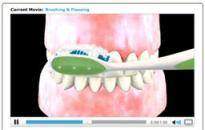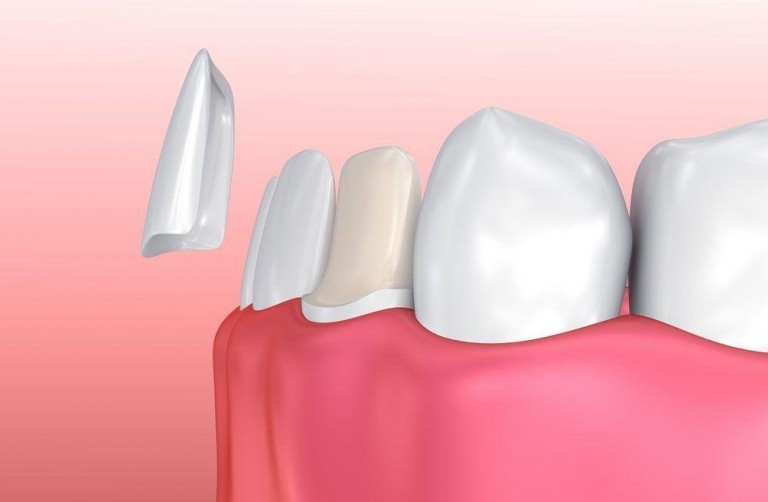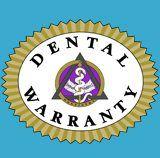Whether your dental needs are a complete exam and cleaning, a full-mouth restoration, or anything in between, we promise to provide you with exceptional care as we enhance the natural beauty of your smile. Below are just some of the many procedures and services we regularly provide to our patients – with a gentle touch, and stunning results. Your smile is our first priority, and we’ll give you something to smile about.
If you have any questions, concerns, or would like to schedule an appointment, please contact us today. We look forward to providing you with the personal care you deserve.
The first step towards a beautiful, healthy smile is to schedule an appointment. Please press the “book online appointment now” to schedule an appointment online. If you don’t want to schedule an online appointment, please contact our office by phone or complete the appointment request form below. Either ways, Our scheduling coordinator will contact you to confirm your appointment and go over any questions you may have.
Please do not use this form to cancel or change an existing appointment.
Patient Testimonials in Las Cruces, NM
“Mesilla Valley Family Dentistry is great! The staff is friendly and always remember your name, you are not just a number here. Katie, the dental hygienist is excellent. She is always gentle and always willing to answer questions so that you can improve your dental health. Dr Borham is great. He always is concerned about your oral and dental health. He is very knowledgeable and was able to tell I had a calcified tooth by just looking! No other dentist had ever picked up on that. I think that if you try Mesilla Valley Family Dentistry you will wonder why you ever went anywhere else!”
“There is a new dentist at Mesilla Valley family dentistry and he is awesome. I have terrible anxiety around the issue of dentistry and this office is able to put me at ease. They are friendly helpful and efficient. My husband and I would not go anywhere else.”
“I’m like most people that do not like going to the dentist. This place made me feel comfortable from start to finish. What an amazing team Dr. Borhan has put together! He is a wonderful, patient, informative, non-pushy, makes you feel at home, friendly dentist, a true artist in making everyone look their best. My teeth and I am so happy to have found this place!”
“I have been a patient here for 30+ years. From the front desk, to the office manager, to the dental techs, to the doctor, the staff has always been very friendly, punctual, competent, and professional.”
“Everyone at Mesilla Valley Family Dentistry has been friendly, considerate and helpful. They are also very knowledgeable and do all they can to make me comfortable. If I have questions or need help scheduling or rescheduling an appointment, there is no problem.”
“Comfortable and quality care. Always clean and a pleasant atmosphere.”

“The team at Mesilla Valley Family Dentistry are the best! I can always be assured that I will receive a high quality of care – Katie rocks as my hygienist! Any other services are always of the highest quality – believe it or not – comfortable surrounding (Oh,no! The dentist) and excellent staff from the reception room to the payment! Thanks to all of you!”
“I have been a patient at Mesilla Valley Family Dentistry since 2007 and I am grateful that we have such excellent dental care available locally. Dr. Borham is very personable and caring, and the treatment he offers is outstanding and absolutely state-of-the-art. I have known and appreciated Teri, Katie, Yvonne, and Gus for quite some time, and I am very happy to see that they continue to be part of the team. Dr. Borham and his wonderful staff are outstanding professionals who treat their patients with utmost competence and care. They do everything in their power to make going to the dentist as pleasant and painless as possible.”
“Everyone is so welcoming and they smile when they see patients. I feel genuinely cared for there. So much that I have never even thought about finding any other dentist. The staff remembers tidbits about your life as well and that speaks volumes about their care provided for patients. They answer every question, explain every procedure, and really want you to feel comfortable with what is taking place. Terry in the office is a financial whiz when it comes to figuring what my insurance covers and how much I pay out of pocket. I really trust the staff there. All of them are wonderful! Some people hate going to the dentist… well they have never been here if they don’t like going!”
“Great DLT’s and service. Top notch dentistry!”
“Dr. Borham and staff are very professional, polite and caring. They explain every procedure that is indicated for dental health. I have been pain-free for every dental procedure I have needed for my dental care. This is a very big plus because it makes the experience a pleasant one. Dr. Borham and staff work with your schedule for appointments and do not pressure you. I would highly recommend Mesilla Valley Family Dentistry.”
We’d love to hear from you! Please fill out the form below or contact us with your feedback.
“I have been going there since 2005. Really love the staff, especially Katie and Tery. Met Dr. Borham on the last visit and he seems like a very nice guy. Moving to Tucson and really concerned about finding a new dentist and dental hygienist. May even consider driving back to Cruces twice a year and to stay with them.”
“I have been going to Mesilla Valley for years and am very happy that Dr. Borham took over the practice. Dr. Borham is the most gentle dentist I have ever been to in my life. Also Teri the office manager listens to any concern you have and answers any questions easily. Katie is also a great hygienist and does an amazing job on my teeth.”
“The entire staff is always courteous and they truly care about me as a patient and person. Everything is always explained at every visit. No matter the procedure, I always feel quite at home. Thank you, you truly make going to the dentist much less painful. Until my next visit …..”

“I started going to MVD about 7 years ago, and have never regretted it. I have really come to appreciate the talent, professionalism and comfort of the facility and all the people there, from the receptionist to the administrator, the assistants, hygienists and especially Dr. Borham. They keep you informed, part of the plan, comfortable and work tirelessly with difficult schedules (and dental phobias!). Wonderful place, wonderful people.”
“You all made me feel very comfortable, you really look out for your patents. Thanks Again look forward for all my dental care there!!!”

Helpful Links for Dental Information
In addition to our own website, there are other sites on the Web that provide interesting and helpful dental information. Because we are committed to improving the oral healthcare knowledge of our patients, we are providing the following selection of links to other sites you might find interesting and informative. We have grouped some of the links into various categories to provide quick access to the topics of greatest interest to you.
If you have a suggestion for a new link, please send us an email, as we are always looking for good resources to pass along to our valued patients and visitors to our website. We hope you find these sites helpful!
General Dental Websites
The following links provide some good general information on dentistry:
- Academy of General Dentistry – The AGD’s consumer information site “Know Your Teeth” provides information on more than 50 oral dental health topics.
- American Dental Association – Provides information for the general public including dental care articles, dental insurance information, and information for students interested in dentistry.
Oral Health Care & Products
Links to sites providing helpful information on oral health and home care products patients can use to maintain optimum oral health:
- Colgate – A trusted resource for dental health information and oral care products.
- Crest – One of the world’s most trusted brands in dental products.
- Sonicare – Learn how the Sonicare toothbrush creates an indescribable clean feeling, the benefits you can expect, and even take a factory tour.
Other Interesting Websites
- National Museum of Dentistry – The museum, a Smithsonian Institution Affiliate, is a lively national center where visitors learn the importance of a healthy smile and are fascinated by the rich history of dentistry.
FAQS at Mesilla Valley Family Dentistry
Below are some of the most frequently asked questions patients have about dentistry and oral health issues. If you have any other questions, or would like to schedule an appointment, please contact our dental office, we would love to hear from you.
Click on a question below to see the answer.
What should I do if I have bad breath?
Bad breath (halitosis) can be an unpleasant and embarrassing condition. Many of us may not realize that we have bad breath, but everyone has it from time to time, especially in the morning.
There are various reasons one may have bad breath, but in healthy people, the major reason is due to microbial deposits on the tongue, especially the back of the tongue. Some studies have shown that simply brushing the tongue reduced bad breath by as much as 70 percent.
What may cause bad breath?
-
Morning time – Saliva flow almost stops during sleep and its reduced cleansing action allows bacteria to grow, causing bad breath.
-
Certain foods – Garlic, onions, etc. Foods containing odor-causing compounds enter the blood stream; they are transferred to the lungs, where they are exhaled.
-
Poor oral hygiene habits – Food particles remaining in the mouth promote bacterial growth.
-
Periodontal (gum) disease – Colonies of bacteria and food debris residing under inflamed gums.
-
Dental cavities and improperly fitted dental appliances – May also contribute to bad breath.
-
Dry mouth (Xerostomia) – May be caused by certain medications, salivary gland problems, or continuous mouth breathing.
-
Tobacco products – Dry the mouth, causing bad breath.
-
Dieting – Certain chemicals called ketones are released in the breath as the body burns fat.
-
Dehydration, hunger, and missed meals – Drinking water and chewing food increases saliva flow and washes bacteria away.
-
Certain medical conditions and illnesses – Diabetes, liver and kidney problems, chronic sinus infections, bronchitis, and pneumonia are several conditions that may contribute to bad breath.
Keeping a record of what you eat may help identify the cause of bad breath. Also, review your current medications, recent surgeries, or illnesses with your dentist.
What can I do to prevent bad breath?
-
Practice good oral hygiene – Brush at least twice a day with an ADA approved fluoride toothpaste and toothbrush. Floss daily to remove food debris and plaque from in between the teeth and under the gumline. Brush or use a tongue scraper to clean the tongue and reach the back areas. Replace your toothbrush every 2 to 3 months. If you wear dentures or removable bridges, clean them thoroughly and place them back in your mouth in the morning.
-
See your dentist regularly – Get a check-up and cleaning at least twice a year. If you have or have had periodontal disease, your dentist will recommend more frequent visits.
-
Stop smoking/chewing tobacco – Ask your dentist what they recommend to help break the habit.
-
Drink water frequently – Water will help keep your mouth moist and wash away bacteria.
-
Use mouthwash/rinses – Some over-the-counter products only provide a temporary solution to mask unpleasant mouth odor. Ask your dentist about antiseptic rinses that not only alleviate bad breath, but also kill the germs that cause the problem.
In most cases, your dentist can treat the cause of bad breath. If it is determined that your mouth is healthy, but bad breath is persistent, your dentist may refer you to your physician to determine the cause of the odor and an appropriate treatment plan.
How often should I brush and floss?
Brushing and flossing help control the plaque and bacteria that cause dental disease.
Plaque is a film of food debris, bacteria, and saliva that sticks to the teeth and gums. The bacteria in plaque convert certain food particles into acids that cause tooth decay. Also, if plaque is not removed, it turns into calculus (tartar). If plaque and calculus are not removed, they begin to destroy the gums and bone, causing periodontal (gum) disease.
Plaque formation and growth is continuous and can only be controlled by regular brushing, flossing, and the use of other dental aids.
Toothbrushing – Brush your teeth at least twice a day (especially before going to bed at night) with an ADA approved soft bristle brush and toothpaste.
-
Brush at a 45 degree angle to the gums, gently using a small, circular motion, ensuring that you always feel the bristles on the gums.
-
Brush the outer, inner, and biting surfaces of each tooth.
-
Use the tip of the brush head to clean the inside front teeth.
-
Brush your tongue to remove bacteria and freshen your breath.
Electric toothbrushes are also recommended. They are easy to use and can remove plaque efficiently. Simply place the bristles of the electric brush on your gums and teeth and allow the brush to do its job, several teeth at a time.
Flossing – Daily flossing is the best way to clean between the teeth and under the gumline. Flossing not only helps clean these spaces, it disrupts plaque colonies from building up, preventing damage to the gums, teeth, and bone.
-
Take 12-16 inches (30-40cm) of dental floss and wrap it around your middle fingers, leaving about 2 inches (5cm) of floss between the hands.
-
Using your thumbs and forefingers to guide the floss, gently insert the floss between teeth using a sawing motion.
-
Curve the floss into a “C” shape around each tooth and under the gumline. Gently move the floss up and down, cleaning the side of each tooth.
Floss holders are recommended if you have difficulty using conventional floss.
Rinsing – It is important to rinse your mouth with water after brushing, and also after meals if you are unable to brush. If you are using an over-the-counter product for rinsing, it’s a good idea to consult with your dentist or dental hygienist on its appropriateness for you.
Are amalgam (silver) fillings safe?
Over the years there has been some concern as to the safety of amalgam (silver) fillings. An amalgam is a blend of copper, silver, tin and zinc, bound by elemental mercury. Dentists have used this blended metal to fill teeth for more than 100 years. The controversy is due to claims that the exposure to the vapor and minute particles from the mercury can cause a variety of health problems.
According to the American Dental Association (ADA), up to 76% of dentists use silver containing mercury to fill teeth. The ADA also states that silver fillings are safe and that studies have failed to find any link between silver containing mercury and any medical disorder.
The general consensus is that amalgam (silver) fillings are safe. Along with the ADA’s position, the Center for Disease Control (CDC), the World Health Organization, the FDA, and others support the use of silver fillings as safe, durable, and cost effective. The U.S. Public Health Service says that the only reason not to use silver fillings is when a patient has an allergy to any component of this type of filling. The ADA has had fewer than 100 reported incidents of an allergy to components of silver fillings, and this is out of countless millions of silver fillings over the decades.
Although studies indicate that there are no measurable health risks to patients who have silver fillings, we do know that mercury is a toxic material when we are exposed at high, unsafe levels. For instance, we have been warned to limit the consumption of certain types of fish that carry high levels of mercury in them. However, with respect to amalgam fillings, the ADA maintains that when the mercury combines with the other components of the filling, it becomes an inactive substance that is safe.
There are numerous options to silver fillings, including composite (tooth-colored), porcelain, and gold fillings. We encourage you to discuss these options with your dentist so you can determine which is the best option for you.
How often should I have a dental exam and cleaning?
You should have your teeth checked and cleaned at least twice a year, though your dentist or dental hygienist may recommend more frequent visits.
Regular dental exams and cleaning visits are essential in preventing dental problems and maintaining the health of your teeth and gums. At these visits, your teeth are cleaned and checked for cavities. Additionally, there are many other things that are checked and monitored to help detect, prevent, and maintain your dental health. These include:
-
Medical history review: Knowing the status of any current medical conditions, new medications, and illnesses, gives us insight to your overall health and also your dental health.
-
Examination of diagnostic x-rays (radiographs): Essential for detection of decay, tumors, cysts, and bone loss. X-rays also help determine tooth and root positions.
-
Oral cancer screening: Check the face, neck, lips, tongue, throat, tissues, and gums for any signs of oral cancer.
-
Gum disease evaluation: Check the gums and bone around the teeth for any signs of periodontal disease.
-
Examination of tooth decay: All tooth surfaces will be checked for decay with special dental instruments.
-
Examination of existing restorations: Check current fillings, crowns, etc.
-
Removal of calculus (tartar): Calculus is hardened plaque that has been left on the tooth for sometime and is now firmly attached to the tooth surface. Calculus forms above and below the gum line, and can only be removed with special dental instruments.
-
Removal of plaque: Plaque is a sticky, almost invisible film that forms on the teeth. It is a growing colony of living bacteria, food debris, and saliva. The bacteria produce toxins (poisons) that inflame the gums. This inflammation is the start of periodontal disease!
-
Teeth polishing: Removes stain and plaque that is not otherwise removed during toothbrushing and scaling.
-
Oral hygiene recommendations: Review and recommend oral hygiene aids as needed (electric dental toothbrushes, special cleaning aids, fluorides, rinses, etc.).
-
Review dietary habits: Your eating habits play a very important role in your dental health.
As you can see, a good dental exam and cleaning involves quite a lot more than just checking for cavities and polishing your teeth. We are committed to providing you with the best possible care, and to do so will require regular check-ups and cleanings.
How can I tell if I have gingivitis or periodontitis (gum disease)?
Four out of five people have periodontal disease and don’t know it! Most people are not aware of it because the disease is usually painless in the early stages. Unlike tooth decay, which often causes discomfort, it is possible to have periodontal disease without noticeable symptoms. Having regular dental check-ups and periodontal examinations are very important and will help detect if periodontal problems exist.
Periodontal disease begins when plaque, a sticky, colorless, film of bacteria, food debris, and saliva, is left on the teeth and gums. The bacteria produce toxins (acids) that inflame the gums and slowly destroy the bone. Brushing and flossing regularly and properly will ensure that plaque is not left behind to do its damage.
Other than poor oral hygiene, there are several other factors that may increase the risk of developing periodontal disease:
-
Smoking or chewing tobacco – Tobacco users are more likely than nonusers to form plaque and tartar on their teeth.
-
Certain tooth or appliance conditions – Bridges that no longer fit properly, crowded teeth, or defective fillings that may trap plaque and bacteria.
-
Many medications – Steroids, cancer therapy drugs, blood pressure meds, oral contraceptives. Some medications have side affects that reduce saliva, making the mouth dry and plaque easier to adhere to the teeth and gums.
-
Pregnancy, oral contraceptives, and puberty – Can cause changes in hormone levels, causing gum tissue to become more sensitive to bacteria toxins.
-
Systemic diseases – Diabetes, blood cell disorders, HIV / AIDS, etc.
-
Genetics may play role – Some patients may be predisposed to a more aggressive type of periodontitis. Patients with a family history of tooth loss should pay particular attention to their gums.
Signs and Symptoms of Periodontal Disease
-
Red and puffy gums – Gums should never be red or swollen.
-
Bleeding gums – Gums should never bleed, even when you brush vigorously or use dental floss.
-
Persistent bad breath – Caused by bacteria in the mouth.
-
New spacing between teeth – Caused by bone loss.
-
Loose teeth – Also caused by bone loss or weakened periodontal fibers (fibers that support the tooth to the bone).
-
Pus around the teeth and gums – Sign that there is an infection present.
-
Receding gums – Loss of gum around a tooth.
-
Tenderness or Discomfort – Plaque, calculus, and bacteria irritate the gums and teeth.
Good oral hygiene, a balanced diet, and regular dental visits can help reduce your risk of developing periodontal disease.
Why is it important to use dental floss?
Brushing our teeth removes food particles, plaque, and bacteria from all tooth surfaces, except in between the teeth. Unfortunately, our toothbrush can’t reach these areas that are highly susceptible to decay and periodontal (gum) disease.
Daily flossing is the best way to clean between the teeth and under the gumline. Flossing not only helps clean these spaces, it disrupts plaque colonies from building up, preventing damage to the gums, teeth, and bone.
Plaque is a sticky, almost invisible film that forms on the teeth. It is a growing colony of living bacteria, food debris, and saliva. The bacteria produce toxins (acids) that cause cavities and irritate and inflame the gums. Also, when plaque is not removed above and below the gumline, it hardens and turns into calculus (tartar). This will further irritate and inflame the gums and also slowly destroy the bone. This is the beginning of periodontal disease.
How to floss properly:
-
Take 12-16 inches (30-40cm) of dental floss and wrap it around your middle fingers, leaving about 2 inches (5cm) of floss between the hands.
-
Using your thumbs and forefingers to guide the floss, gently insert the floss between teeth using a sawing motion.
-
Curve the floss into a “C” shape around each tooth and under the gumline. Gently move the floss up and down, cleaning the side of each tooth.
Floss holders are recommended if you have difficulty using conventional floss.
Daily flossing will help you keep a healthy, beautiful smile for life!
How can cosmetic dentistry help improve the appearance of my smile?
If you’re feeling somewhat self-conscious about your teeth, or just want to improve your smile, cosmetic dental treatments may be the answer to a more beautiful, confident smile.
Cosmetic dentistry has become very popular in the last several years, not only due to the many advances in cosmetic dental procedures and materials available today, but also because patients are becoming more and more focused on improving their overall health. This includes dental prevention and having a healthier, whiter, more radiant smile.
There are many cosmetic dental procedures available to improve your teeth and enhance your smile. Depending on your particular needs, cosmetic dental treatments can change your smile dramatically, from restoring a single tooth to having a full mouth make-over. Ask your dentist how you can improve the health and beauty of your smile with cosmetic dentistry.
Cosmetic Procedures:
Teeth Whitening: Bleaching lightens teeth that have been stained or discolored by age, food, drink, and smoking. Teeth darkened as a result of injury or taking certain medications can also be bleached, but the effectiveness depends on the degree of staining present.
Composite (tooth-colored) Fillings: Also known as “bonding”, composite fillings are now widely used instead of amalgam (silver) fillings to repair teeth with cavities, and also to replace old defective fillings. Tooth-colored fillings are also used to repair chipped, broken, or discolored teeth. This type of filling is also very useful to fill in gaps and to protect sensitive, exposed root surfaces caused by gum recession.
Porcelain Veneers: Veneers are thin custom-made, tooth-colored shells that are bonded onto the fronts of teeth to create a beautiful individual smile. They can help restore or camouflage damaged, discolored, poorly shaped, or misaligned teeth. Unlike crowns, veneers require minimal tooth structure to be removed from the surface of the tooth.
Porcelain Crowns (caps): A crown is a tooth-colored, custom-made covering that encases the entire tooth surface restoring it to its original shape and size. Crowns protect and strengthen teeth that cannot be restored with fillings or other types of restorations. They are ideal for teeth that have large, fractured or broken fillings and also for those that are badly decayed.
Dental Implants: Dental implants are artificial roots that are surgically placed into the jaw to replace one or more missing teeth. Porcelain crowns, bridges, and dentures can be made specifically to fit and attach to implants, giving a patient a strong, stable, and durable solution to removable dental appliances.
Orthodontics: Less visible and more effective brackets and wires are making straightening teeth with orthodontics much more appealing to adult patients. Also, in some cases, teeth may be straightened with custom-made, clear, removable aligners that require no braces.
Thanks to the advances in modern dentistry, cosmetic treatments can make a difference in making your smile shine!
What are my options if I have missing teeth?
With many state-of-the-art dental treatments and prevention options available in dentistry today, there are fewer reasons for having to extract (remove) teeth. When something does go wrong with a tooth, we try to do everything possible to restore the tooth to its original function. Removing a tooth is the last option because we know that removal may lead to severe and costly dental and cosmetic problems if the tooth is not replaced.
Losing a tooth can be a very traumatic experience and it’s very unfortunate when it does happen. Injury, accident, fracture, severe dental decay, and gum disease are the major reasons for having to remove a tooth. If teeth are lost due to injury or have to be removed, it is imperative that they be replaced to avoid cosmetic and dental problems in the future.
When a tooth is lost, the jaw bone that helped to support that tooth begins to atrophy, causing the teeth on either side to shift or tip into the open space of the lost tooth. Also, the tooth above or below the open space will start to move towards the open space because there is no opposing tooth to bite on. These movements may create problems such as decay, gum disease, excessive wear on certain teeth, and TMJ (jaw joint) problems. These problems and movements do not result immediately, but will eventually appear, compromising your chewing abilities, the health of your bite, and the beauty of your smile.
Options for replacement of missing teeth:
Removable bridges – This type of bridge is a good solution for replacing one or more missing teeth, especially in complex dental situations where other replacement options are not possible. They are usually made of tooth-colored, artificial teeth combined with metal clasps that hook onto adjacent natural teeth. Removable bridges are the most economical option for replacing missing teeth, but may be the least aesthetically pleasing. This is because the metal clasps on the appliances are often impossible to completely conceal.
Fixed bridges – This type of bridge is generally made of porcelain or composite material and is anchored (cemented) permanently to a natural teeth adjacent to the missing tooth site. The benefit of this type of bridge is that it is fixed (not removable) and it is very sturdy. The disadvantage is that in order to create a fixed appliance, two healthy, natural teeth will have to be crowned (capped) to hold the bridge in place.
Dentures – This type of tooth replacement is used when most or all of the natural teeth are missing in one dental arch. Dentures are removable artificial teeth that are made to closely resemble the patients’ original teeth.
Implants – Are a great way to replace one or more missing teeth. They may also be great to support ill fitting dentures. A dental implant is an artificial root that is surgically placed into the jaw bone to replace a missing tooth. An artificial tooth is placed on the implant, giving the appearance and feel of a natural tooth. Implants are very stable, durable, and are the most aesthetically pleasing tooth replacement option.
If you are missing teeth, ask us if they need replacement and what options are available to you. Together we will select the best replacement option for your particular case. Prevention and early treatment is always less involved and less costly than delaying treatment and allowing a serious problem to develop.
What can be done about old, unattractive, or discolored fillings?
Most of us have fillings in our mouths that date back many years and some may have even been placed during our childhood. These fillings may now be old, dark, and unattractive, making us feel self-conscious when we smile, laugh, and talk. Old fillings are not only unattractive, they may also be defective. When a filling is old, the margins (space between the tooth and filling) may eventually open and allow bacteria and food debris to enter, potentially causing dental decay.
Your dentist can check your fillings and evaluate if they are defective and need replacement. Also, if you simply want to replace fillings that are unattractive, you and your dentist can decide which ones should be replaced first and what replacement options would best suit you. There are many state-of-the-art dental filling materials and procedures available today that are quick, painless, and cost effective for replacing old, unattractive or defective fillings.
Options for replacing old, unattractive, or discolored fillings:
Composite (bonding) fillings – These are tooth-colored fillings that can be closely matched to the color of your existing teeth. They are particularly well suited for use in front teeth or visible parts of teeth and are one of the best ways to improve the health and beauty of your smile.
Crowns (Caps) – These types of restoration are used when a tooth is too damaged and cannot be repaired with a filling or other type of restoration. A crown is a covering that encases the entire tooth surface restoring it to its original shape and size. A crown protects and strengthens the remaining tooth structure and can be made of gold, porcelain, and other tooth-colored materials.
Inlays/Onlays – These restorations are custom made fillings. They can be made of composite resin, porcelain or gold and are made by a dental laboratory and placed by a dentist. Inlays/onlays are usually best for the posterior chewing surfaces of teeth and are utilized to conservatively repair teeth that have large defective/unattractive fillings or have been damaged by decay or trauma.
Porcelain veneers – Used primarily in the front teeth, veneers are very thin shells of tooth-shaped porcelain that are individually crafted and permanently cemented to the front surface of teeth. They are a great solution for fixing discolored, pitted, shipped, malformed, or slightly crooked teeth. Veneers are also used if you have unwanted spaces. Veneers are very durable, natural looking, and do not stain. This makes veneers a very popular solution for restoring a smile impaired by old, unattractive fillings.
As you can see, there are various options for replacing old, unattractive fillings. These treatments will provide strong, natural, and long-lasting replacement solutions to enhance the health and beauty of your smile.
What does heart disease and other medical conditions have to do with periodontal (gum) disease?
Many people are unaware that having periodontal disease (the destruction of gum tissue and bone that hold our teeth in place) can affect your overall health. Periodontal disease is one of the most common infections; often more prevalent than the common cold! Periodontal disease is not only the number one reason people lose teeth; it can also affect the health of your body!
Periodontal disease is a bacterial infection, and in its earliest stages, it’s called gingivitis. It starts when an accumulation of plaque (a colony of bacteria, food debris, and saliva) is NOT regularly removed from the gums and teeth. The bacteria in plaque produce toxins/acids that irritate and infect the gums and eventually destroy the jaw bone that supports the teeth. When periodontal disease is not treated it can eventually lead to tooth loss!
There are numerous studies that have looked into the correlation between gum disease and major medical conditions. These studies suggest people with periodontal disease are at a greater risk of systemic disease and indicate that periodontal disease may cause oral bacteria to enter the bloodstream and travel to major organs and begin new infections. Research suggests that periodontal bacteria in the blood stream may:
-
Contribute to the development of heart disease
-
Increase the risk of stroke
-
Compromise the health of those that have diabetes or respiratory diseases
-
Increase a woman’s risk of having a preterm, low-birth weight baby
Researchers conclude there is still much research to be done to understand the link between periodontal disease and systemic diseases, but enough research has been done to support that infections in the mouth can play havoc elsewhere in the body.
To ensure a healthy, disease-free mouth, we recommend the importance of regular dental check-ups and cleanings, which include a periodontal evaluation. Also, diligent home care and a proper diet can help reduce the plaque and bacteria in the mouth.
Remember….the mouth body connection! Taking care of your oral health may contribute to your overall medical health!

Forms for New Patients at Mesilla Valley Family Dentistry
If you are a new patient to our office, the attached file contains our new patient bundle with forms that will need to be filled out when you arrive at our office. Printing them, filling them out and bringing them with you will allow us to attend to your medical needs more quickly than completing them on your arrival. Thank you and please call our office if you have any questions at all.
- Health History Form
- Notice of Privacy Practices Acknowledgement Form
- Office Notice Policy
- Insurance Form
- Cancellation Policy
- Payment Options
- Records Released To Dr. Borham
*This web site uses files in Adobe Acrobat Portable Document Format  (pdf) which require Adobe® Acrobat® Reader for viewing and printing. It is available to download free.
(pdf) which require Adobe® Acrobat® Reader for viewing and printing. It is available to download free.
Appointment
The first step towards a beautiful, healthy smile is to schedule an appointment. Please contact our office by phone or complete an online appointment request.
Payment Options
For your convenience, we accept cash, personal checks, money orders, and most major credit cards. Payment is expected at the time services are performed. Feel free to contact our office if your treatment plan requires more comprehensive dental work and you want to discuss financial arrangements.




Dental Insurance
We accept most traditional insurance plans. Please contact our office to verify acceptance of your plan. We do not participate in Health Management Organizations(HMO); however, we will be happy to file your insurance claims for you. We also offer flexible payment plans. We are happy to file insurance for your reimbursement as long as you are free to choose your own dentist. We look forward to hearing from you.
Dental Warranty
Find Comfort and peace of mind knowing that your investment is protected. We offer 5 years warranty on most of our procedures that will cover your investment even if you have to move out. Your coverage will follow you wherever you move. For more information please visit dentalwarrantycorp.com
 Financing Options
Financing Options
CareCredit is here to help you pay for treatments and procedures your insurance does not cover. They offer No Interest* financing or low minimum monthly payment options so you can get what you want, when you want it.
With three simple steps, including an instant approval process, it’s easy to apply for Care Credit. After you’re approved, you’re free to use CareCredit to finance our services.
Now you don’t have to worry about saving up for the procedures you want and need. With CareCredit, the decision’s in your hands to get what you want, when you want it. For more information or to apply online, visit carecredit.com
Please contact our office if you have any questions regarding dental insurance, payments or financial options that are currently available. We look forward to serving you!
Educational Dental Videos

Because we are committed to improving the oral healthcare knowledge of our patients, we are providing the following selection of dental videos which we hope you will find interesting and informative. We have grouped the videos into various categories to provide quick access to the topics of greatest interest to you.
Click Here to watch our series of educational dental videos!
Frequently Asked Questions
Click Here to view some of the most frequently asked questions patients have about dentistry and oral health issues.
Interesting Dental Websites
In addition to our own website, there are other sites on the Web that provide interesting and helpful dental information. Because we are committed to improving the oral healthcare knowledge of our patients, we provide a selection of links to other sites you might find interesting and informative. To view these visit our links page.

Explore Our Educational Dental Videos
Because we are committed to improving the oral healthcare knowledge of our patients, we are providing the following selection of dental videos which we hope you will find interesting and informative. We have grouped the videos into various categories to provide quick access to the topics of greatest interest to you.
Please contact us if you have any questions or would like to schedule an appointment.

